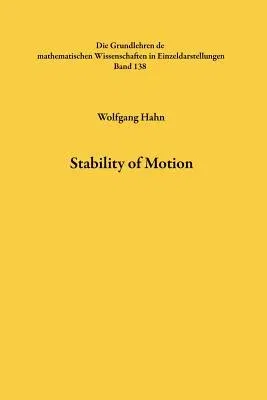Wolfgang Hahn
(Author)Stability of Motion (Softcover Reprint of the Original 1st 1967)Paperback - Softcover Reprint of the Original 1st 1967, 18 May 2012

Qty
1
Turbo
Ships in 2 - 3 days
In Stock
Free Delivery
Cash on Delivery
15 Days
Free Returns
Secure Checkout
Part of Series
Grundlehren Der Mathematischen Wissenschaften
Part of Series
Grundlehren Der Mathematischen Wissenschaften (Springer Hardcover)
Print Length
448 pages
Language
English
Publisher
Springer
Date Published
18 May 2012
ISBN-10
3642500870
ISBN-13
9783642500879
Description
Product Details
Author:
Book Edition:
Softcover Reprint of the Original 1st 1967
Book Format:
Paperback
Country of Origin:
NL
Date Published:
18 May 2012
Dimensions:
23.39 x
15.6 x
2.39 cm
ISBN-10:
3642500870
ISBN-13:
9783642500879
Language:
English
Location:
Berlin, Heidelberg
Pages:
448
Publisher:
Series:
Weight:
644.1 gm

